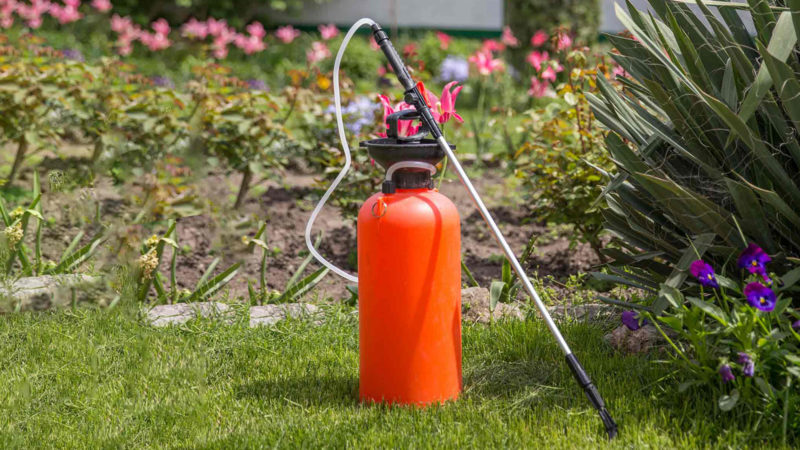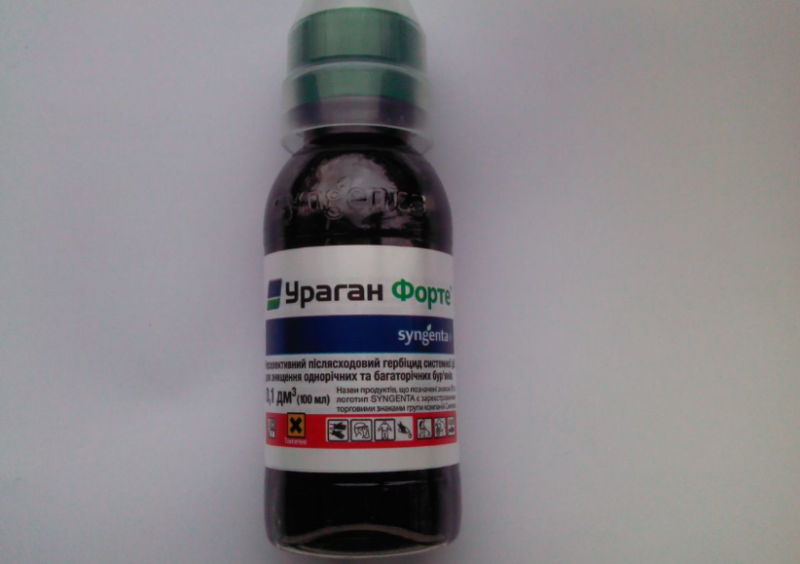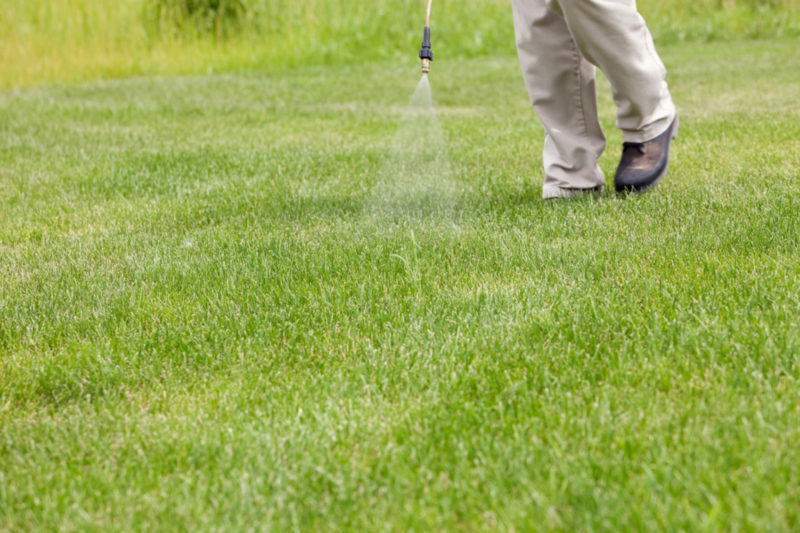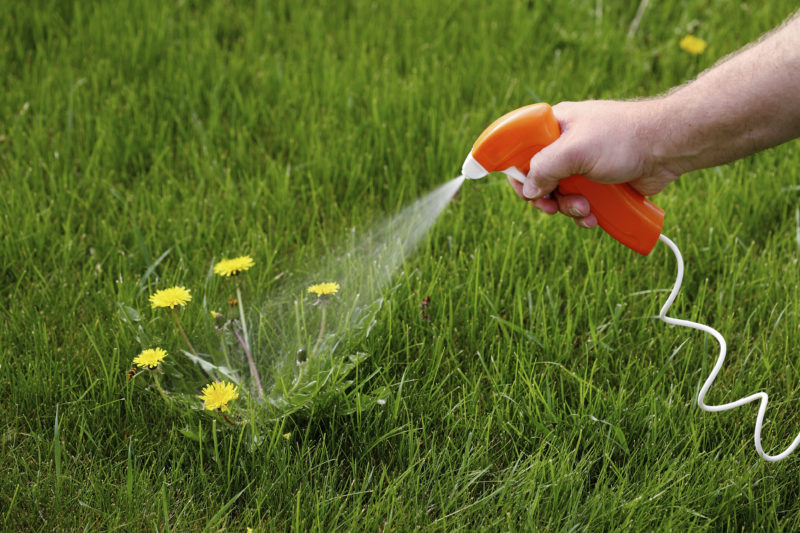Landowners of any scale have to deal with weeds that take moisture and nutrients from the soil, significantly reducing yield. Most often, the destruction of weeds by mechanical methods requires a lot of effort, in these cases, continuous herbicides or non-selective drugs come to the rescue. Properly used funds do not have a negative impact on human health.
Material Content:
Where continuous herbicides are used
A herbicide is a pesticide. In the established concentration, it helps to solve many problems that arise when growing crops, with low labor and material costs, as well as without harming the environment.
Among them:
- Complete destruction of unwanted vegetation in the exclusion zones: railroad tracks, airfields, power lines, highways, construction sites, stadiums, industrial territories.
- Cleaning of reservoirs (reeds) in fish farms, irrigation canals (wheat grass, sow thistles), destruction of algae on shipping routes.
- Destruction of weeds on virgin lands before plowing.
- Processing of agricultural land from weeds before planting and after harvesting plants.
- Desiccation (dehydration) of plants such as sunflowers, corn, cotton, potatoes and others to facilitate harvesting.
- Cleaning rows of berry and fruit trees, vineyards.
- Destruction of old, sick cultures.
- Fighting perennial weeds (wheat grass, cow parsnip) in areas, including under the construction of a lawn.
Depending on the scope of application, various chemical preparations are used.
Herbicides from weeds affect not only them, but also on cultivated plants, for example, when the poison acts on monocotyledonous cereal weeds, the main grain crop can also be affected. In this situation, drugs of another group are used - selective action, to which cultivated plants are resistant. However, with increasing doses, these drugs also become dangerous, capable of destroying all vegetation.
Mechanism of action on weeds
New technologies contribute to an increase in the range of pesticides with various mechanisms of exposure. Depending on the composition and spectrum of influence on the plant, non-selective drugs are divided into groups.
- Contact. Getting on the foliage, remaining on it in the form of a liquid or crystals, disrupt the metabolic processes in the tissues at the place of contact and lead to the death of the green mass without injuring the root, weeds grow over time.
- Systemic Penetrating into the tissues, spread throughout all parts of the plant, destroying it along with the root.
The contact group can also be used to destroy grass before emergence, has a quick effect, is resistant to water ("Acet").
Systemic drugs are more effective for plants with a powerful or widespread root system (Roundup, Buran).
By the nature of the effect, pesticides make up groups of soil herbicides (act on seeds, roots, seedlings) and leaf (above-ground green mass) compounds that affect:
- photosynthesis - penetrate inside and destroy chloroplasts, block the synthesis of amino acids ("Axial", "Topical Super");
- plant respiration - cause the death of roots, disturbance of weed nutrition and, consequently, vegetation ("Esteron", "Widmaster");
- cell membranes - provoke softening of tissues, necrosis and draining ("Fusilad forte");
- growth hormones - replacing the plant’s natural hormones, they have a toxic effect on the plant, inhibiting the development of all vegetative parts (“Lancelot”).
There are also unclear reasons for the negative impact of herbicides on weed control.
Names of effective drugs
Among the many continuous herbicides, many are universal and therefore are very popular among agronomists of large farms, and among summer residents.
- Roundup. Universal. The active substance is glyphosate. A distinctive feature is that it does not accumulate in the soil and makes it possible to sow seeds in the shortest time after processing (10 days), due to the systemic effect on the plant.
- Total 480 A universal preparation used to destroy a wide range of weeds before sowing or after harvesting, and as a desiccant - before picking fruit.
- Hurricane Forte. A broad spectrum systemic herbicide. Complete weed control after 14 days.
- "Tornado Bau." The only solid-ready product. The aqueous solution contains 8.8 g / l of glyphosate. One treatment is enough against malicious perennials and shrubbery.
- "Agrokiller." The highly concentrated glyphosate composition (500 g / l) destroys not only complex weeds (horsetail, wheatgrass, hogweed and the like), but also young growth of trees.
- "Tornado". An analogue of "Agrokiller" with an identical action, but less concentrated composition.
- "Lapis lazuli". Selective herbicide, used for potatoes, tomatoes and other vegetables.
When using any of the herbicides, the instructions for use and general safety rules must be strictly observed.
Uses for weed control
The effectiveness and safety of pesticides directly depends on their concentration and time of use.
Classify:
- pre-emergence and post-emergence;
- universal.
Herbicides are available in the form of ready-made solutions and emulsions used by spraying, and powders or granules, which are unchanged introduced into the ground.
To use this or that poison, the ultimate goal must be taken into account.
- To suppress perennial weed crops in the fields, preparations are used after harvesting, scattering granules or spraying the soil.
- Difficult to eradicate perennials are subject to double processing: in the fall and summer foliage.
- For annual weeds, pre-emergence application of pesticides by any method or spraying of vegetative parts is sufficient.
- Desiccants are sprayed before harvesting.
- To destroy individual trees and bushes, you can use injections.
- For processing large areas - by spraying with air using specialized equipment.
The numerous market of herbicides totals about 300 varieties. There are many ways to use it. Choosing the right weed control product is no problem.
Pros and cons of using
- The undoubted advantage of continuous action herbicides is the destruction of weeds in large areas, in inaccessible places, in bodies of water where mechanical weeding is impossible or requires enormous material costs.
- A single use of the product in compliance with the proportions is sufficient for all weed vegetation cycles.
- When using herbicides, soil moisture is retained, which evaporates in large quantities with mechanical weeding.
Uncontrolled use of continuous action herbicides when dosage is not observed reduces soil fertility, since such preparations have the property of phototoxicity and accumulation in the soil.
But even the use of pesticides strictly according to the instructions and without harm to human health leads to the death of beneficial insects and microorganisms, therefore, such a procedure should always be justified.
















